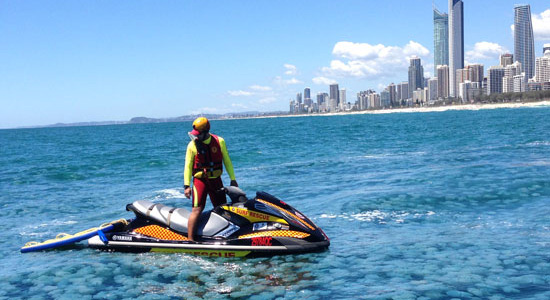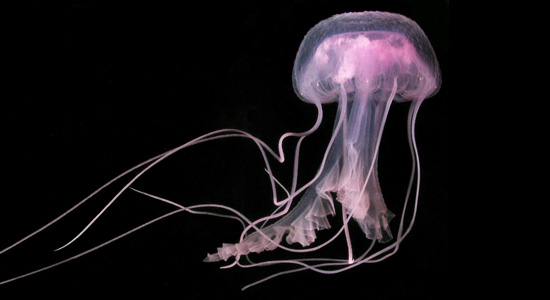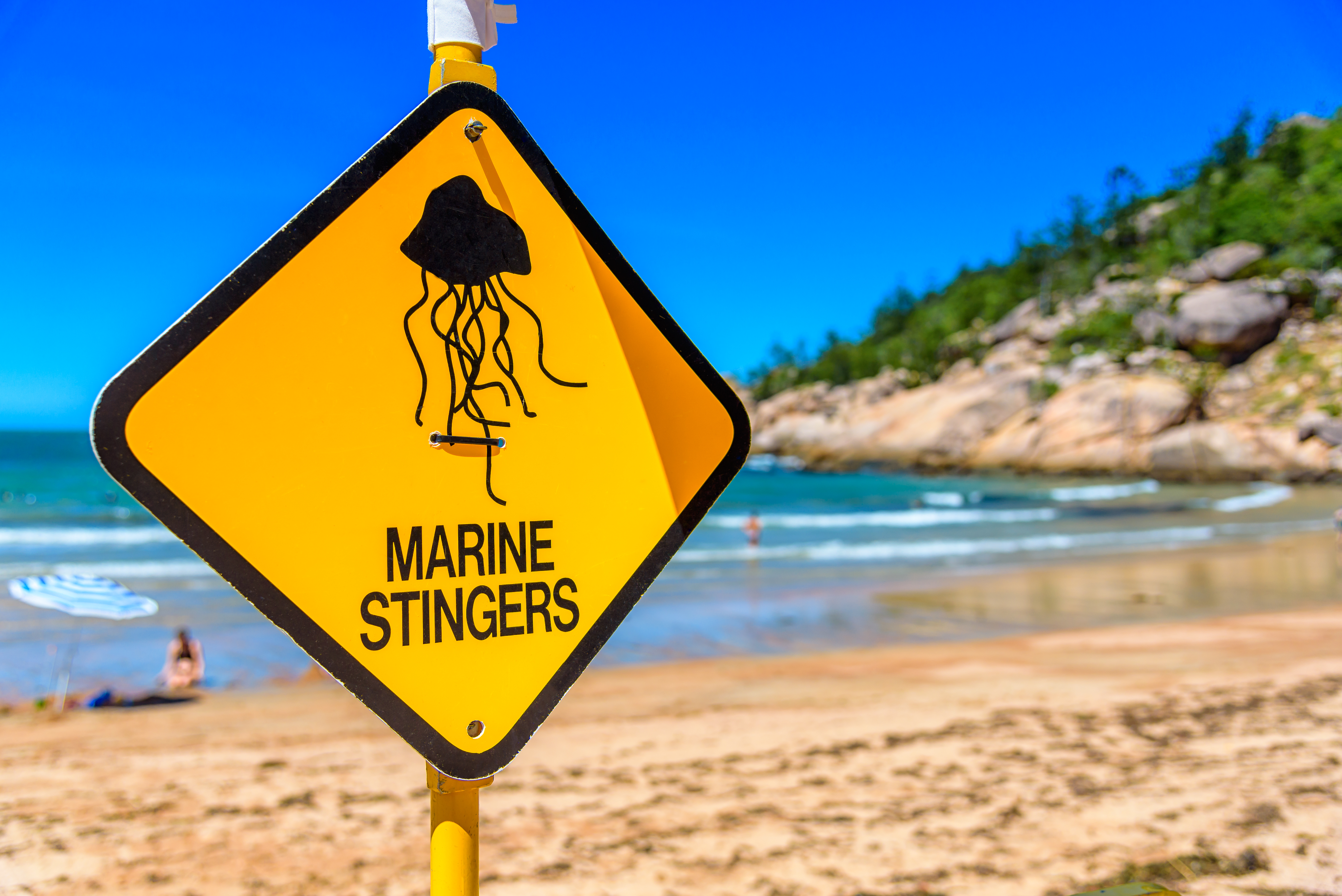 A spectacular bloom of the blue blubber sea jelly (Catostylus mosaicus) near Surfers Paradise, Australia. Credit, Surf Life Saving Queensland.
A spectacular bloom of the blue blubber sea jelly (Catostylus mosaicus) near Surfers Paradise, Australia. Credit, Surf Life Saving Queensland.
Sea jellies are renowned for forming spectacular population blooms. Blooms occur when favourable environmental conditions promote the production and survival of large numbers of juvenile jellies (ephyrae) that grow into adult medusae. Blooms have occurred in the world’s oceans for as long as sea jellies have existed and are a normal part of the life cycle of many species of sea jelly. However, only about half of the scyphozoan species tend to form blooms; the others tend to be quite sparsely scattered in the ocean and rarely occur in large numbers.
Sometimes jelly blooms cause problems for people and coastal industries. For example, sea jellies sometimes interrupt supplies of electricity and freshwater when they clog the cooling water intakes of coastal power plants and the intakes of desalination plants. They can clog the nets of commercial fishers and their stings can damage the skin of fish caught in the nets, which reduces the value of the catch. Large blooms of sea jellies have also drifted into aquaculture cages off the coast of Ireland and Scotland, killing thousands of tonnes of salmon and costing the industry millions of dollars. Sea jellies also sometimes clog the bow-thrusters and condensers of ships, which affect the ship’s ability to manoeuver in port or to cool its engines. Indeed, in 2005, the USS Ronald Regan; one of the world’s largest nuclear-powered aircraft carriers, departed the Port of Brisbane ahead of schedule because blooms of the ‘blue blubber’ (Catostylus mosaicus) kept blocking its condensers!
Most people are likely to encounter sea jellies during a swim at the beach. When large numbers of sea jellies aggregate near beaches, the beaches may be closed
 The Mauve stinger, Pelagia noctiluca, has caused mass mortality of fish in aquaculture cages. Credit Denis Riek
The Mauve stinger, Pelagia noctiluca, has caused mass mortality of fish in aquaculture cages. Credit Denis Riek

Are blooms increasing?
Claims that blooms of sea jellies are increasing are common in the scientific literature and mainstream media, but what is the evidence behind such claims? The best data available suggests that some species of sea jelly have increased in some regions, but that others have decreased. In the same way that some animals, like rats, may thrive in urbanised environments, some species of sea jelly may also thrive in regions where humans have disturbed the environment. However, like other animals, such as Bilbies, some species of sea jellies may be adversely affected by human influences and may be endangered. There is very little research available on the abundance of most sea jelly species.